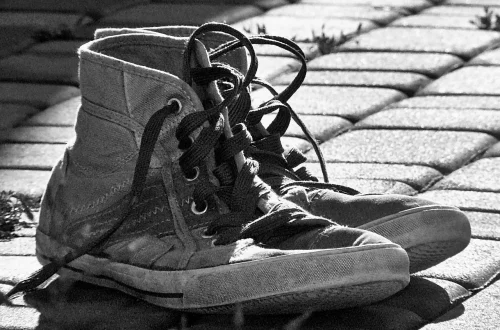
Can You Flush Condoms? What You Need to Know About Proper Disposal
In today’s world, where sustainability and environmental awareness are at the forefront of many discussions, the proper disposal of everyday items has become increasingly important. One such item that often raises questions is the condom. While they are essential for safe sexual practices, the question of how to dispose of them correctly is often overlooked. Many people may be tempted to flush condoms down the toilet, believing it to be a convenient solution. However, this seemingly simple action can lead to significant issues, not just for individual plumbing systems but also for broader environmental concerns.
When condoms are flushed, they can cause blockages in pipes, leading to costly plumbing repairs and potentially harming local water systems. Additionally, improper disposal can contribute to pollution in oceans and waterways, as these products do not break down easily. Understanding the right way to dispose of condoms is crucial for maintaining personal and public health, as well as protecting our planet. The following sections will delve deeper into the implications of flushing condoms, offer alternative disposal methods, and explore the broader context of waste management.
Understanding the Risks of Flushing Condoms
Flushing condoms may seem like a harmless act, but it poses several risks that can have both immediate and long-term consequences. One of the most significant risks is the potential for clogged plumbing. Toilets are designed to handle human waste and toilet paper, not foreign objects like condoms. When a condom is flushed, it can become lodged in the plumbing, leading to blockages that can require professional intervention to resolve.
These blockages can result in overflowing toilets and sewage backups, which are not only unpleasant but can also lead to expensive repairs. Homeowners may find themselves facing hefty bills from plumbers who need to clear the pipes. Moreover, these plumbing issues can create a sanitary hazard, as sewage backups may expose individuals to harmful bacteria and pathogens.
Beyond individual plumbing problems, the flushing of condoms contributes to larger environmental issues. Wastewater treatment facilities are not equipped to handle non-biodegradable materials. When condoms enter the sewage system, they can pass through treatment processes and end up in rivers, lakes, and oceans. This pollution can harm marine life and disrupt ecosystems. Many marine animals mistake plastic debris for food, leading to ingestion and, ultimately, death.
In addition to harming wildlife, the presence of non-biodegradable products in our waterways contributes to the growing problem of microplastics, which have been found in the most remote parts of the planet. The microplastics can enter the food chain, posing risks to human health as well. Therefore, understanding the risks associated with flushing condoms is essential for responsible waste management.
Proper Disposal Methods for Condoms
Given the risks associated with flushing condoms, it is crucial to know the proper disposal methods. The best way to dispose of a condom is to wrap it in a tissue or paper towel and place it in the trash. This simple action can prevent plumbing issues and environmental pollution. Many people may hesitate to dispose of condoms in this manner due to concerns about odor or hygiene. However, wrapping the condom minimizes these concerns and ensures a discreet disposal method.
If you are in a public restroom or other shared space, look for a designated disposal bin. Many facilities provide receptacles specifically for the disposal of sanitary products, including condoms. Using these bins helps maintain cleanliness and prevents plumbing problems in shared facilities.
In some cases, individuals may consider using biodegradable condoms, which are designed to break down more easily than traditional latex options. While these products can offer a more environmentally friendly alternative, they still require proper disposal in the trash rather than flushing. Always check the packaging for disposal instructions and follow them to ensure compliance with waste management practices.
Educating partners about proper condom disposal is also essential. Open discussions about sexual health and hygiene can foster a more responsible approach to condom use and disposal. By prioritizing proper disposal methods, individuals can contribute to a cleaner environment and prevent potential plumbing issues.
The Environmental Impact of Improper Condom Disposal
The environmental impact of improper condom disposal extends beyond individual plumbing issues. When condoms are flushed or discarded improperly, they contribute to broader ecological challenges. As mentioned, condoms are made from materials that do not decompose easily, which means they can linger in the environment for years, if not longer.
One major concern is the impact of plastic pollution on marine ecosystems. Condoms that end up in oceans can harm marine life through ingestion or entanglement. Sea turtles, for example, often mistake plastic for food, which can lead to internal injuries or death. Additionally, the breakdown of plastics into microplastics poses significant risks to the food chain, as smaller marine organisms consume these particles, which can then be ingested by larger animals and ultimately reach humans.
Furthermore, the chemicals used in condom production can leach into the environment, affecting water quality. Contaminated water sources can have dire consequences for both wildlife and human health. Drinking water polluted with harmful chemicals can lead to various health issues, making it imperative to consider the broader implications of our waste disposal choices.
Advocating for proper disposal methods not only helps mitigate these environmental impacts but also raises awareness about the importance of sustainable practices in everyday life. By making conscious choices about how to dispose of condoms and other products, individuals can play a significant role in protecting the environment.
Promoting Awareness and Responsible Practices
Promoting awareness about responsible condom disposal is essential for creating a culture of sustainability and public health. Education plays a crucial role in informing individuals about the potential consequences of improper disposal and the simple steps they can take to mitigate these issues.
In schools and community centers, sexual health education programs should include comprehensive information on condom use and disposal. By addressing misconceptions and providing clear guidelines, these programs can empower individuals to make informed decisions. This includes understanding the risks associated with flushing and the importance of using trash bins for disposal.
Social media campaigns and public service announcements can also help spread awareness about proper condom disposal. Engaging visuals and relatable messaging can capture the attention of a broad audience and encourage responsible practices. By normalizing discussions about sexual health and disposal methods, we can foster a more open and informed society.
Additionally, manufacturers have a role to play in promoting responsible practices. By clearly labeling packaging with disposal instructions and information about the environmental impact of their products, companies can encourage consumers to make better choices. Biodegradable options can also be highlighted as environmentally friendly alternatives, though it is essential to remind users that these products still require proper disposal.
In conclusion, promoting awareness about the proper disposal of condoms is vital for protecting both personal health and the environment. Through education and advocacy, we can create a culture of responsibility that prioritizes sustainability and hygiene.
**Disclaimer:** This article is not intended as medical advice. For health-related concerns, please consult a qualified healthcare professional.




